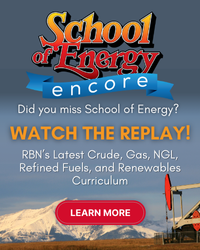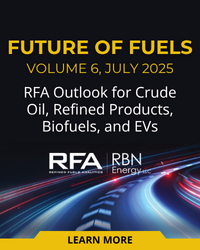With U.S. NGL production hitting a record high of just over 4.0 MMb/d in the fourth quarter of 2017 and ethane production also reaching record volumes at 1.6 MMb/d, the price for ethane has remained stuck at about 25 c/gal — where it’s been for the past two years, even though prices for other NGLs are up over the same period. The combination of roaring high-ethane-content Permian and SCOOP/STACK NGL volumes, coupled with steam cracker outages and construction delays due to Hurricane Harvey, have landed us here. So where do we expect the ethane market to go now as incremental cracker and export demand ramp up in 2018 and 2019? Today, we continue a series on our updated NGL market forecast, highlighting the NGL product whose market is going through the most changes: ethane.
This is the second blog in our series on growing NGL production. In Part 1, we looked at raw-mix NGL production growth, which we forecast to increase from the 4.0 MMb/d reported in November 2017 to average 4.4 MMb/d for the year 2018, and 5.7 MMb/d of produced NGLs in 2023 under RBN’s Growth Scenario. The biggest driver behind the jumps in NGL production in 2018 and 2019 will be ethane production.
Before we get into the details of ethane supply, demand and prices over the forecast period, let’s first look at where we are today and why. Figure 1 shows ethane production by Petroleum Administration for Defense District (PADD) for 2016 and 2017 as reported by the Energy Information Administration (EIA). From January 2016 through December 2017, ethane production increased from just under 1.2 MMb/d to 1.6 MMb/d in November 2017, with a slight dip to 1.53 MMB/d in December 2017. The largest production gains came from PADDs 2 and 3 — 35% of the growth from PADD 3 (Gulf Coast, plus New Mexico; green layer) and 30% from PADD 2 (Midwest; red layer). That is no surprise, considering that the Permian is within PADD 3 and PADD 2 is home to SCOOP/STACK; crude oil and associated gas production are increasing at a steep trajectory in these plays. These are also the areas with some of the lowest NGL transportation costs to the Gulf Coast market (which is the center for most U.S. ethane demand). Lower transport costs means higher ethane netback prices at the gas plant tailgate, which will encourage the extraction of more liquid ethane in PADD 2 and PADD 3 (consequently less ethane rejection) versus other parts of the U.S (For more on the economics of ethane rejection, see our Good To Be A Gas Processor series.)
Join Backstage Pass to Read Full Article







